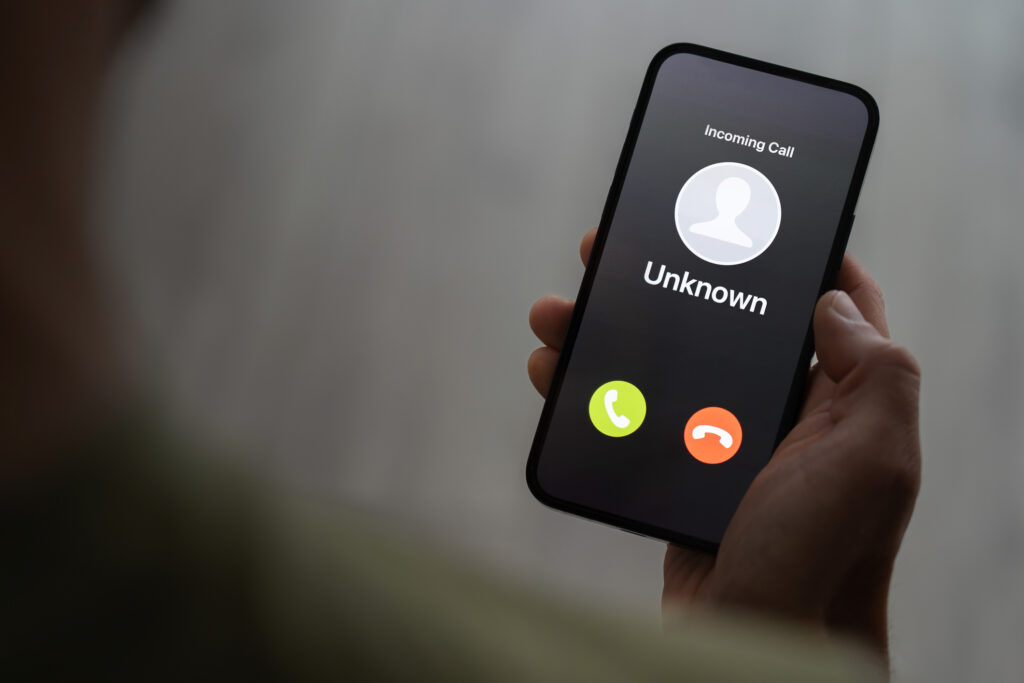Recognizing AI Scams: What to Look for and How to Protect Yourself
Last Updated
July 25, 2025
Written By
Family First FCU
AI usage has skyrocketed in recent years as technology has become more advanced. From rewording emails to generating creative ideas, AI can be a powerful tool that boosts productivity and creativity. However, like any technology, AI can also be misused, and in the wrong hands, it can become dangerous.
In the past, scammers have relied on traditional tactics, like phishing, to manipulate and deceive victims. But now, with AI tools at their fingertips, scammers have become more convincing than ever. By using voice cloning and deep fakes, scammers can now impersonate trusted individuals with alarming accuracy.
Staying informed is your best defense against scammers. In this blog we’ll explore the most prevalent AI scams, how you can identify them, and how you can protect yourself.

Voice Cloning Scams
Scammers are now using AI to replicate the voices of trusted individuals, such as friends, family members, or colleagues, to gain the trust of the victim and trick them into sharing sensitive information or sending money to the scammer.
Recognize the Signs
- The call is unexpected – If you weren’t expecting a call from the person, ask yourself whether it’s typical for them to call at that time.
- The caller asks for sensitive information -Be wary if you’re asked for things like PINs, addresses, full Social Security numbers, or personal account details. Legitimate sources won’t request this information over the phone.
- The caller requests or promises money – Demands for, or promises of, payments via wire transfers, gift cards, or payment apps are immediate red flags. These payment methods make it difficult, and sometimes impossible, to get a refund.
- The caller pressures you to act quickly – Scammers create a false sense of urgency to prevent you from thinking clearly. This tactic is meant to bypass the victim’s sense of caution. They may use fear or your emotions against you.
- The caller insists on secrecy – If someone urges you to keep the conversation private, it’s likely a scam. Scammers do this intentionally to isolate you from support, putting you more at risk.

Deepfake Scams
Deepfakes are hyper-realistic AI-generated videos that appear as though a real person is engaging with you by speaking or moving, but the events in the video are completely fabricated. With the help of AI tools, scammers are using deepfakes to impersonate trusted individuals during video calls or in pre-recorded messages to trick victims into sending money or revealing sensitive data.
How to Spot a Deepfake
- The video appears altered – Look for strange movements, inconsistent lighting, flickering shadows, odd skin tones, unusual blinking, or no blinking at all. AI technology may be more advanced now, but it still makes these common mistakes.
- The audio sounds off – AI-generated speech may be choppy, oddly annunciated, unusually paced, or use vocabulary that feels out of place, or overly specific.
- The person asks for money or personal information – Just like with voice scams, any request for money or private information should raise suspicions immediately, even if the request appears on video.
- There’s urgency to act fast – Again, urgency is a classic manipulation tactic for scammers. Take a moment to evaluate the situation and make an informed decision.
- You’re asked to keep the conversation a secret – Trustworthy people won’t ask you to hide things. If secrecy is emphasized, it’s likely a scam.
What to Do if You Suspect a Scam
- Stop and think – Scammers count on you to act quickly without questioning the situation. By pausing to think, you take this tool away from the scammer and give yourself the chance to make a rational and informed decision.
- Ask questions – Even if the voice sounds familiar, or the video looks real, verify the authenticity if you have doubts. Ask identifying questions only the real individual would know, and verify provided the information with trustworthy sources.
- Hang up if something feels wrong – Caller IDs can be easily faked – even with video calls. When in doubt, end the call and contact the person through a known number. DO NOT call back the suspicious number under any circumstances.
- Flag the video – If the video was sent or posted online, report or flag it on the platform. This helps stop the scam from spreading.
- Report the scam – Contact the Federal Trade Commission (FTC) to file a report. Your report helps investigate and prevent future scams.
- Acknowledge that anyone can be targeted – Believing you’re “too smart” to fall for a scam can make you more vulnerable. Stay cautious and follow the tips above!
Stay Informed, Stay Safe
AI scams are becoming more sophisticated, but they’re not unstoppable. By being aware, recognizing the signs, and knowing how to respond, you can protect yourself and others from falling victim. Remember to always take a moment to pause, verify, and question unusual requests – especially when urgency or secrecy is involved.
For more information or to report a scam, visit: www.ftc.gov



